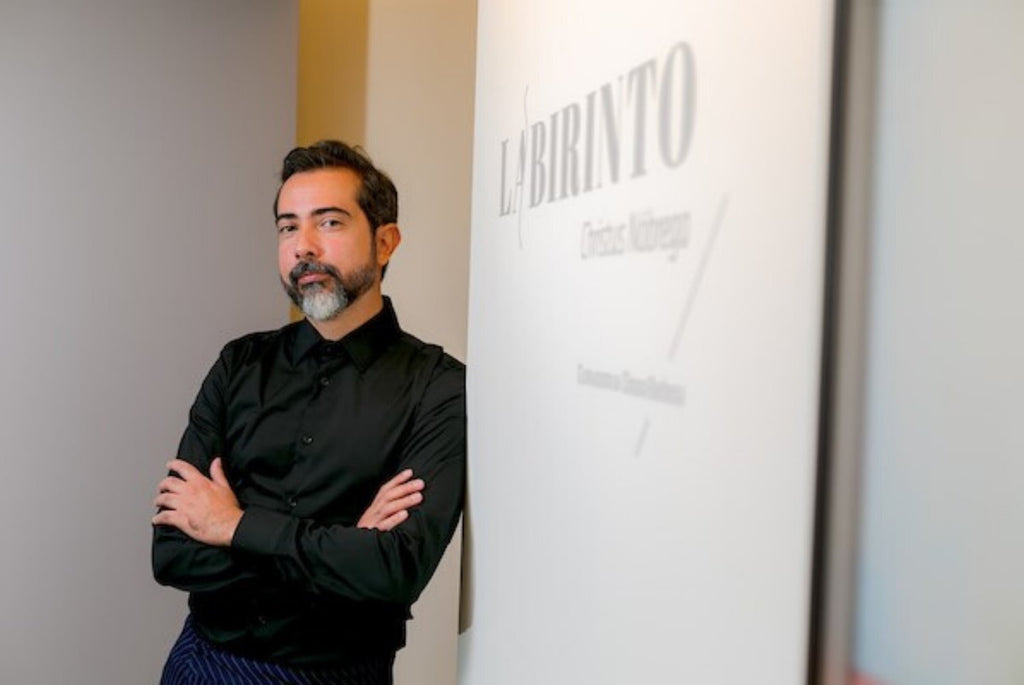
Meet renowned Brazilian artist and academic Christus Nóbrega

artisan is delighted to welcome Brazilian artist and academic Christus Nóbrega to Brisbane for the opening of Labirinto. Christus has travelled all the way from Brazil for the official opening and to participate our In conversation and workshop. Get to know more about Christus and his exhibition and creative practice.
Q: Christus, welcome to Brisbane and artisan. Please can you introduce yourself and your work?
I was born in the state of Paraíba, northeastern Brazil. I moved to Brasilia, the capital of Brazil, 15 years ago. In Brasilia, I intensified my studies in contemporary art, making a master's and doctorate. Today, besides being an artist, I am also a Professor at the Arts Institute of the University of Brasília. Brasilia, like Canberra, is a city planned to be the country's capital. Brasilia, an atypical and modernist city, was erected entirely in five years and designed by the famous architects Oscar Niemeyer and Lúcio Costa. Brasília is a UNESCO World Heritage List site due to its modernist architecture.
As a migrant, my work has the expeditionary trip as an investigation method and the self-portrait as the base. From my self-image, my own body and my memories, I problematize the image, the body and the stories of society. I have a special appreciation for ancestral craft techniques, very present in my home state (Paraíba), so sometimes I turn to them for my work. We didn't wake up today like yesterday. Each self-portrait we take at different times in our lives will reveal new facets of our identity. In a self-portrait, we can represent what we are, what we were, what we want to be. We can choose what to emphasize or what to hide.
Q: How was Labirinto developed? What themes do you pursue? What drives you to work with those themes?
The artworks presented in this exhibition at artisan were developed in partnership with the lacemakers of Chã dos Pereira, a village in the interior of the state of Paraíba in northeastern Brazil. The women of this region dedicate themselves to make a lace called Labirinto (labyrinth) - consequently the name of the exhibition. Unravelling and reconstructing the weave of a piece of linen makes the 'Labirinto'.
It was in the proximity of this region that my maternal grandmother was born. When she became a widow she lost her pension, and without support, was forced to give custody of her five children to other families. She could only oversee her children's growth at a distance. Then she started selling the 'Labirinto' to generate benefits for the family.
The labyrinth technique is a metaphor for what happened to my family - deconstruction and reconstruction. I started the project trying to find the old family photos of my mother, my uncles and aunts. I printed some of these photos on linen and took them to the lacemakers. Over three years of work, we embroidered the images, creating kinds of bruises in the photos. With this series of artworks, I tried to problematize the issues of memory and forgetfulness, revealing the fragility of life in the face of cruel government politics.
Q: What are the most central aspects for you in the exhibition?
The central issue of the exhibition is to honour the power of ancestral women in my life. It is an exhibition that pays homage to my ancestry, but at the same time celebrates the feminist movement in the world. It's a story that has been repeated a lot in the history of society.
Q: The exhibition has been in Brazil and Australia (Canberra). Do you enjoy exhibiting in different countries? Do you find people from diverse places respond differently to your work?
Brisbane is the fifth city to host this exhibition. It is a very rich experience to show the exhibition to different audiences. The understandings that the public sees in artworks are always new. The feedback I get from the audience helps me to rethink production and see things that I hadn't seen in my artworks.
What we produce always has a hidden part for ourselves, only accessed when helped by others. I am curious to see the reception of the artworks in Brisbane. Despite the work starting from a very intimate and Brazilian history, I believe that it speaks of universal issues that permeate all of humanity's feelings. Fear of death, memory, and forgetfulness. The family and the connections between people.
Q: What have you been working on recently? What's coming up for you in 2020?
In 2019 I followed the same journey of the famous Australian film, Priscilla the Queen of the Desert. I went to all the cities in the movie and stayed at the same hotels that the drag queens stayed. I crossed almost three thousand kilometres on this journey, also by bus. This expedition to central Australia allowed me to get to know different layers of this incredible country. This journey immersed me in the history of the Australian LGBT community. And as I got to understand this story, I was drawing parallels with the history of the LGBT community in Brazil. I took hundreds of photos, videos, lots of notes, interviews, and researched in public archives during this journey. I spent all year studying this material and have started to produce a series of artworks that will result in an upcoming exhibition and a book.
Q: Have you been to Brisbane before? What are you planning to do while you're here?
Yes, I was in Brisbane in 2018 during The 9th Asia Pacific Triennial of Contemporary Art. In November 2018, I arrived in Canberra for a three-month artist residency. A few days later I travelled to Brisbane to visit the 9th Asia Pacific Triennial of Contemporary Art. It was a fundamental experience for me. At the Triennial I had the chance to see an overview of the arts in Australia and its neighbouring countries. It made me begin to understand the impacting and powerful Aboriginal art and how Australia has been investing in the valorization of ancestral knowledge. It was exciting. Brisbane is a beautiful city. I'm looking forward to knowing more because I spent very little time and was unable to explore the city well. This time I will have the chance to get to know the city better.
Photo @ https://www.metropoles.com/isadora-campos/christus-nobrega-apresenta-a-coletanea-labirinto-para-convidados/amp.


